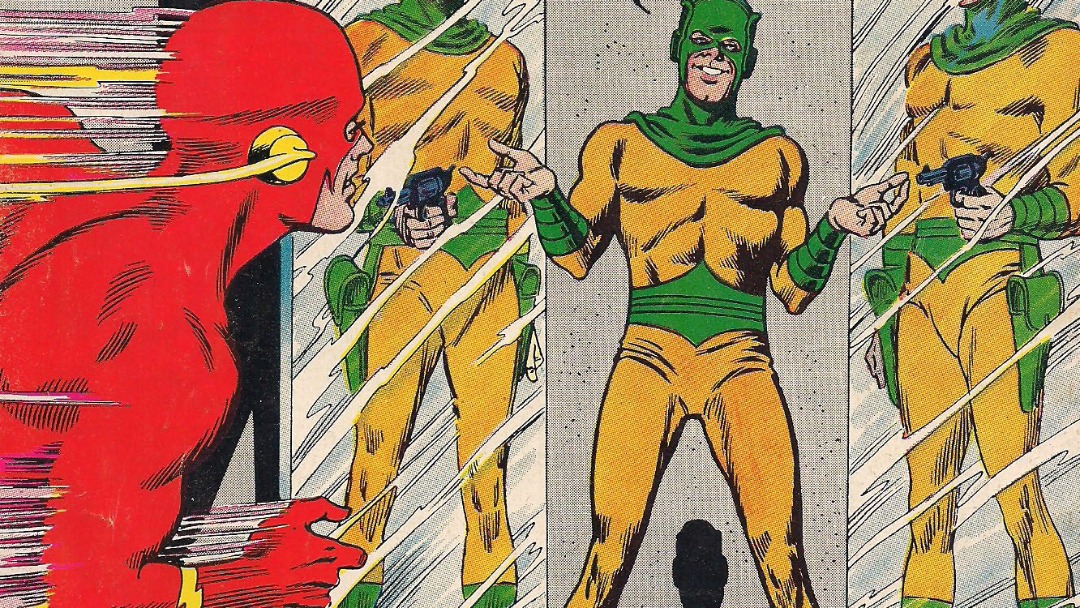Table of Contents Show
Happy National Comic Book Day! A day where readers and artists come together to honor the art and stories of comic books. While no one can celebrate with a convention this year due to COVID-19, there are still many ways to celebrate!
People can still share their collections, re-read an old favorite, and start reading a new series. Here at The Daily Fandom, a few of our members decided to celebrate by reflecting on their first comic book and/or the series that got them into comic books. Today’s a great day for comic book fans to look back and think about the stories and art that made them fall in love with the world of comics. It’s also a great day to share those stories with other fans and people looking to get into comics! Now let’s start our National Comic Book Day 2020 celebration!
Joanis Baino – Mighty Morphin Power Rangers: Pink
To be perfectly honest, I never really thought comics were something I could ever get into. This is mostly due to a young me assuming that comics were something that was strictly for those who identify as a man/boy. However, I am extremely glad that my view on that has changed completely, and it’s all thanks to the very first comic I read: Mighty Morphin Power Rangers: Pink.
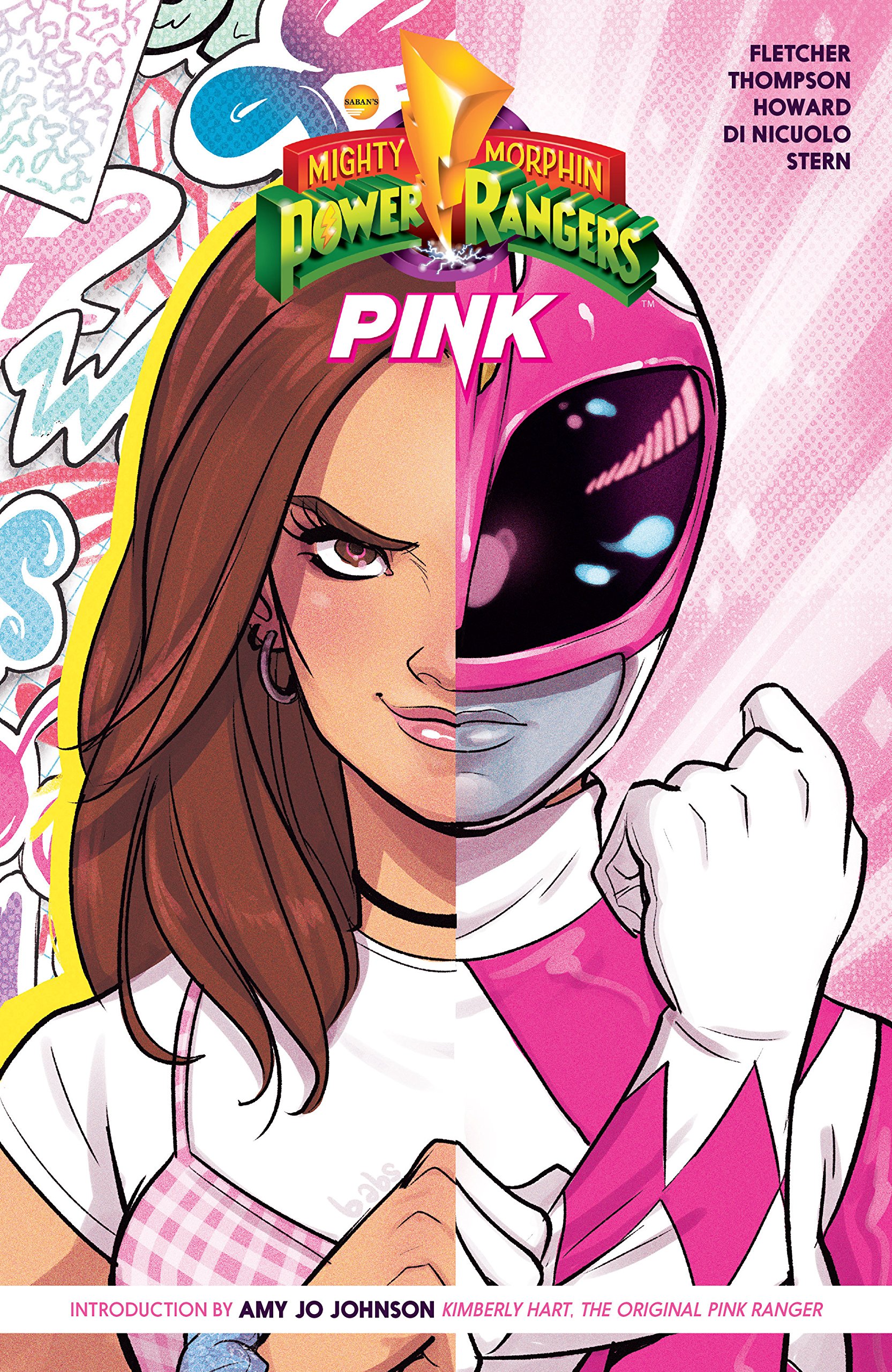
Mighty Morphin Power Rangers: Pink is a mini-series comic—there are only six issues—that was written by Brenden Fletcher, Kelly Thompson, and Tini Howard, with art done by Daniele Di Nicuolo. The comic focuses on Kimberly’s life after leaving the team to go chase her gymnastic dreams of competing at the Pan Global Games. However, the Power Ranger life doesn’t really leave a Ranger despite retiring. Kimberly has pulled back into the life of a Ranger and must venture out on her first solo Power Ranger mission with the help of some old friends and new faces.
This comic was one that I had stumbled upon when I was scrolling through my Tumblr dashboard, and I had seen a post featuring a few images from the comic. For those who don’t know me, Kimberly Hart is my favorite Power Ranger and is a character that I hold dear in my heart (pun not intended). Obviously, the moment I discovered this comic I was immediately interested in it. As soon as I could, I went to the two local comic shops near my house to see if they had all six issues.
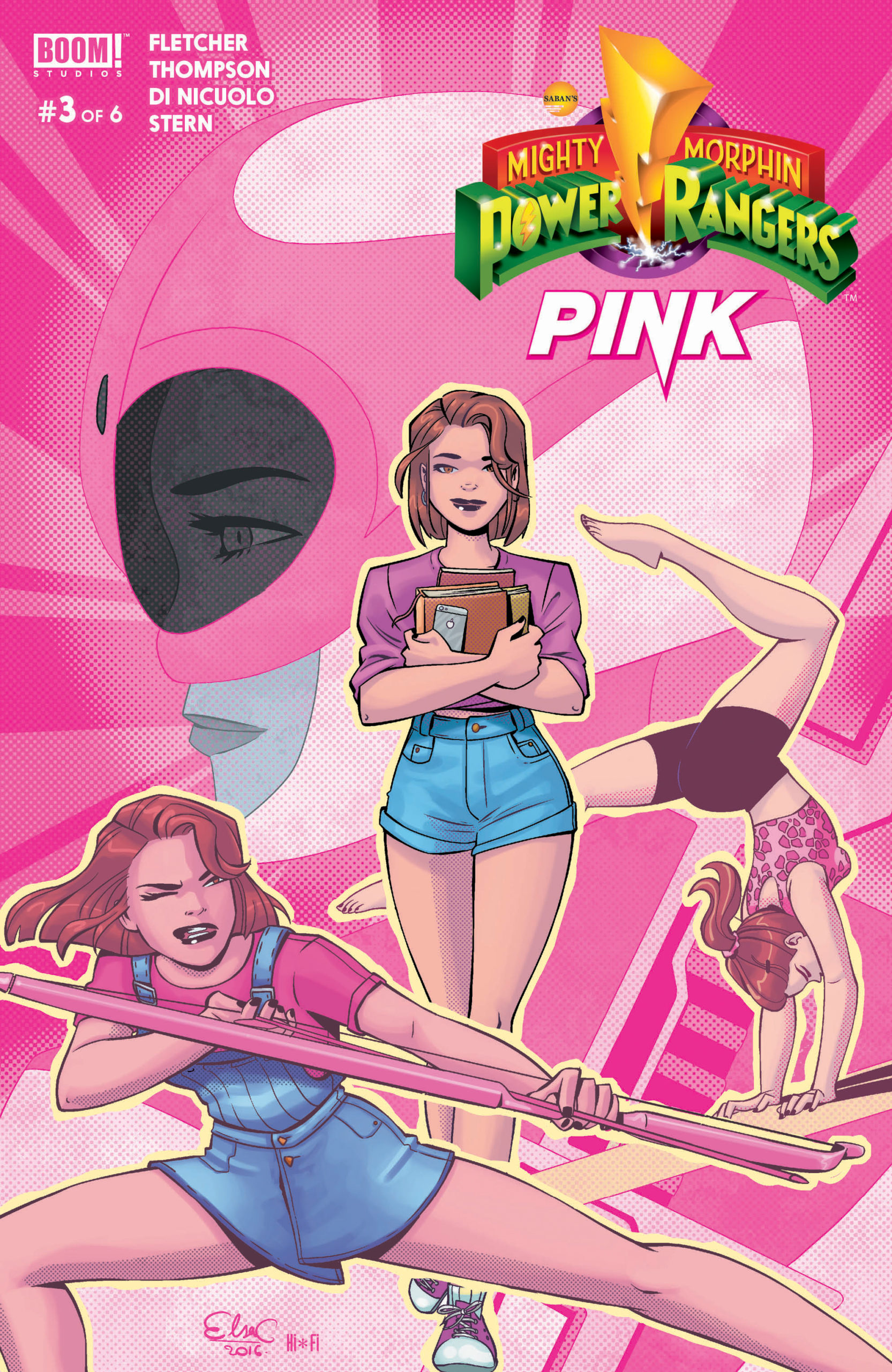
The moment I had all the issues, I went into reading and immediately fell in love. I don’t want to spoil it much for those who haven’t read it yet, but my favorite thing about this comic is that it provides another possible theory as to why Kimberly sent the infamous ‘Dear John’ letter to Tommy in the show. So, if you’re a fan that is still bitter about that letter — like I am and probably forever will be — then I highly recommend this comic! Even if you have never even seen the show or read any of the other Power Ranger comics, this comic can be a great starting point into getting to the world of Power Rangers, especially since it’s a mini-series.
In the end though, Mighty Morphin Power Rangers: Pink is a comic that will always have a special place in my heart because it brought me into the world of comics and taught me that comics can be for everyone.
Brittney Downing – Ultimate Spider-Man
The first time I opened a comic book it was not love at first sight. It was Brian Michael Bendis’ Ultimate Spider-Man. If you’ve ever heard of Bendis, you‘ve also probably heard that he writes dialogue in a very particular way. Seeing Peter Parker talking like the most stereotypical teenager alive made me cringe. Seeing all of the other characters talking in the exact same manner made me cringe even harder. I was only a teenager myself at the time, so recognizing an adult trying to make “cool” and “hip” teenage characters set off an immediate reaction in me.
By some miracle, however, I kept reading. I liked the Spider-Man movies and I really wanted to like Spider-Man comics. Fortunately, once I kept reading, I was absolutely hooked. I would go through dozens of issues a-night and suddenly find myself not just interested in Spider-Man, but also in so many other Marvel characters that appeared alongside him.
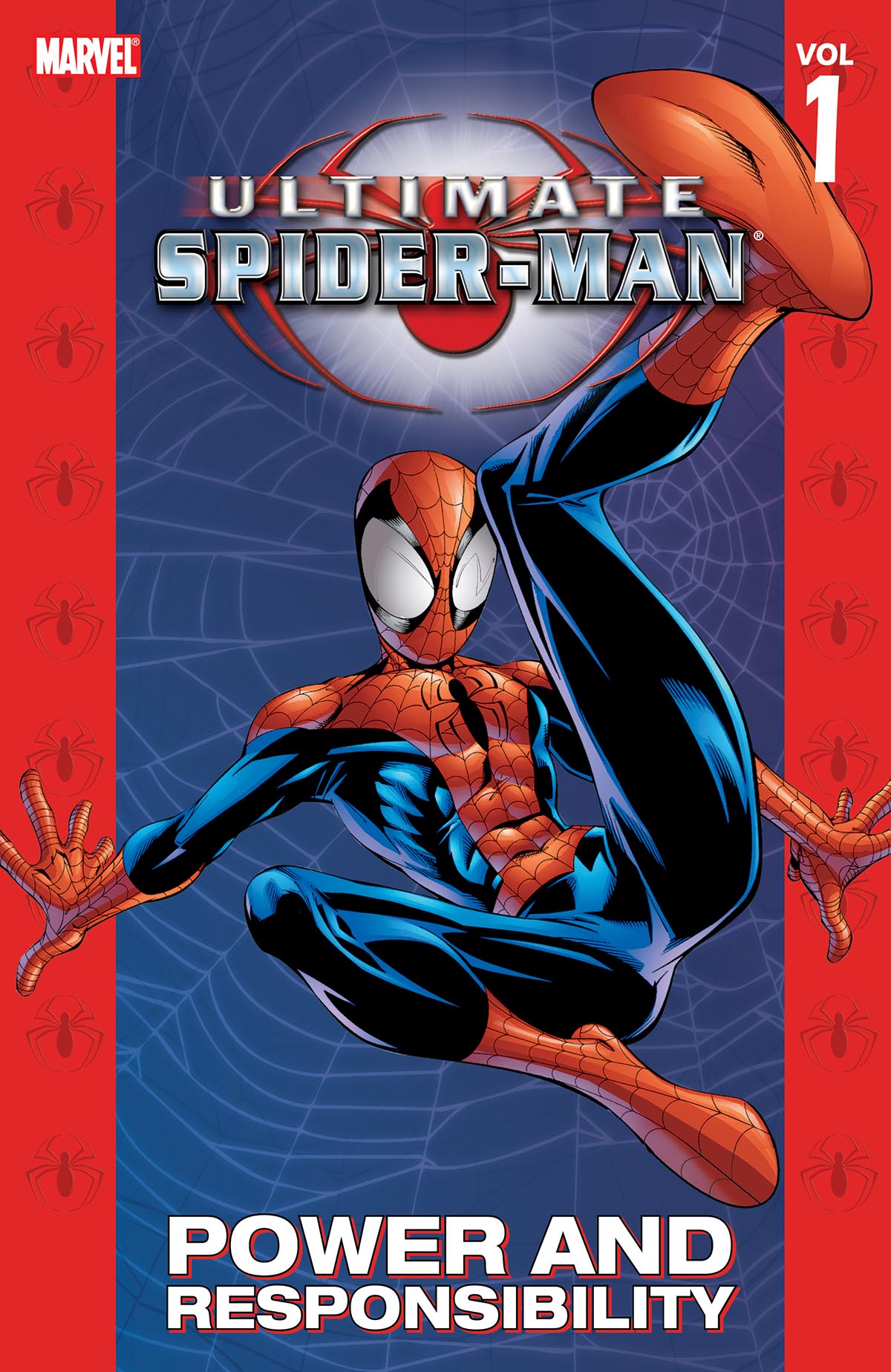
I think what made this comic so appealing to me when I was younger, and what still makes me have a soft spot for Spider-Man even now, is how much heart it has. There are a lot of comics out there that focus solely on action and cool, over-the-top heroics. Ultimate Spider-Man definitely has all of the exciting Spider-Man moments one could expect, but it also fleshes its characters out incredibly well. I don’t remember all of the fights that occurred in it, but I’ll never forget the moments that Peter shared with his family and friends. Also, I’ll never forget all the teenage drama between him and M.J. In my heart it will always be the ultimate Spider-Man story (pun intended).
Entering the realm of comic books can seem incredibly intimidating, especially with larger collective universes like the one Marvel has. But if my experience with Ultimate Spider-Man taught me anything, it’s that the best way to get into comics is simply picking one up and reading. The chances that you’ll understand everything going on is very low, but sometimes all you really need to get hooked on something are good characters. Or maybe just Spider-Man.
Kyle Scher – Legends Of The Dark Claw
My journey into comics is long and complicated, with many stops and starts before finally becoming the massive comic geek I am today. Like most of my generation, it was the adaptations of the Big 2’s characters to the big and small screen that initially got me interested. My uncle had given me VHS tapes of Batman: The Animated Series and from there I grew to love Batman.
Around the same time, my parents took me to see a new movie out in theatres called X-Men and I met Wolverine. A family friend, who was a comic reader and major Wolverine fan, took the opportunity to introduce me to comics via a midway point between the two characters. Legends of the Dark Claw #1 landed in my childhood hands, a series part of the Amalgam Comics line that combines Wolverine and Batman into one character.
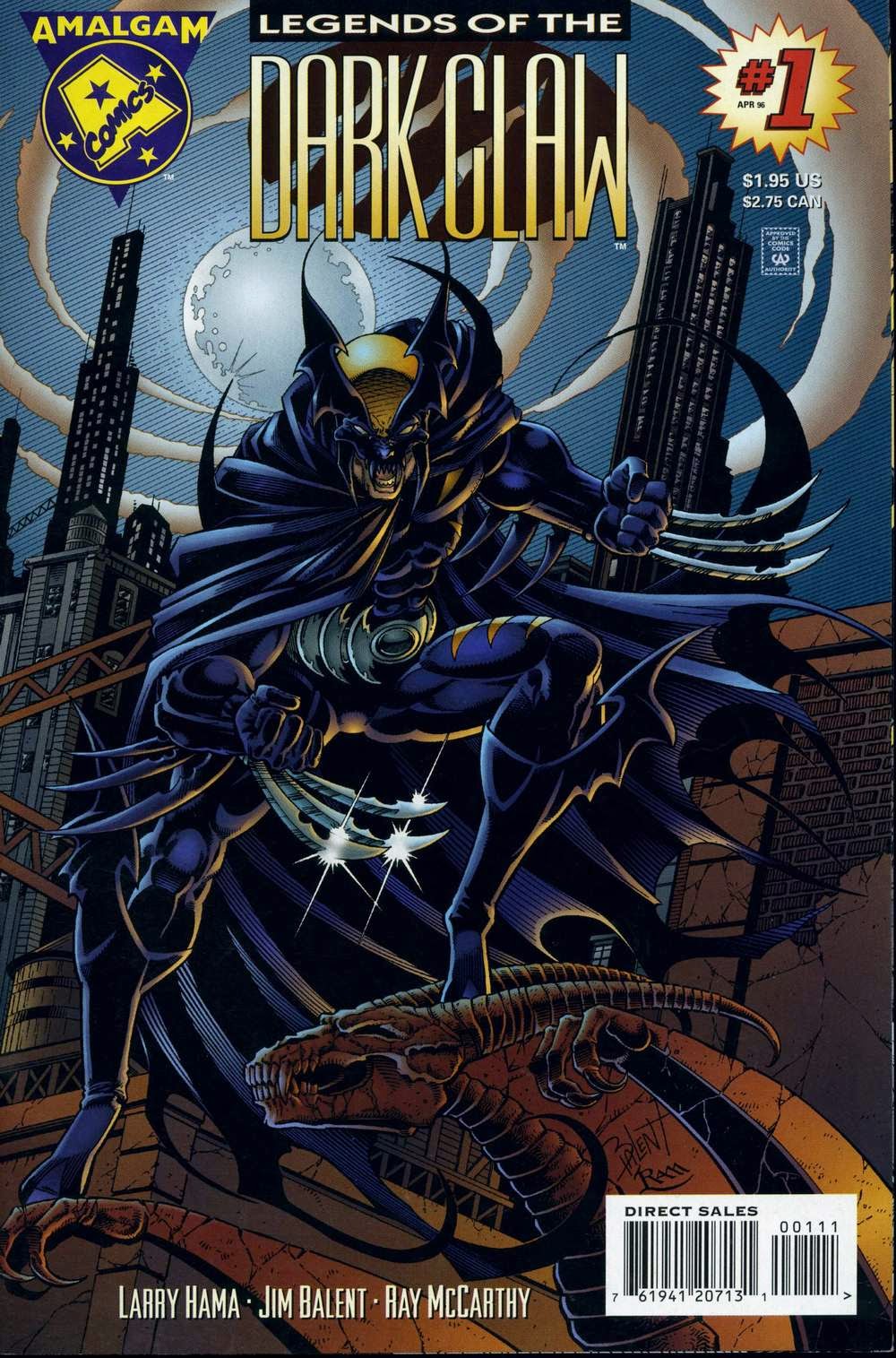
At the time, my younger self had no idea about the interesting cultural touch tone the Amalgam Universe was in comic book history. But it’s fascinating to look back now, as someone who is vastly interested in comic book history, ran his university’s comic book society for two years, and has self-published his own comics, and realize that I was holding one of the many gimmick comics that almost killed the industry in the 90’s.
There is a lot to be said about the state of comics in the 90’s, some good, some bad, but Amalgam in particular is a great microcosm to examine the period. It was an overly-hyped marketing ploy that sold like gangbusters, often appealing to the lowest common denominator, and lacking much in the way of common sense. And yet there was also a point at which the two companies, whose rivalry was constantly touted up by fans, decided to work together and have a bit of fun. The DC vs. Marvel debate is old, stale, and completely devoid of sense considering many creators work for both companies, but humanity loves to organize itself into a tribal mentality. Thankfully the Amalgam Universe celebrates both Marvel and DC and shows that rivalries are petty to begin with.
Legends of the Dark Claw #1 isn’t too much to look at on its own when taken outside of the cultural landscape it was made in. It’s a pretty standard fast-paced 90’s superhero comic with an interesting if shallow gimmick. The combinations present are of course the titular Dark Claw (Batman and Wolverine), Sparrow (Jubilee and Robin, in particular Carrie Kelly), and Huntress (Ms. Marvel, who at the time was Carol Danvers, and Huntress).
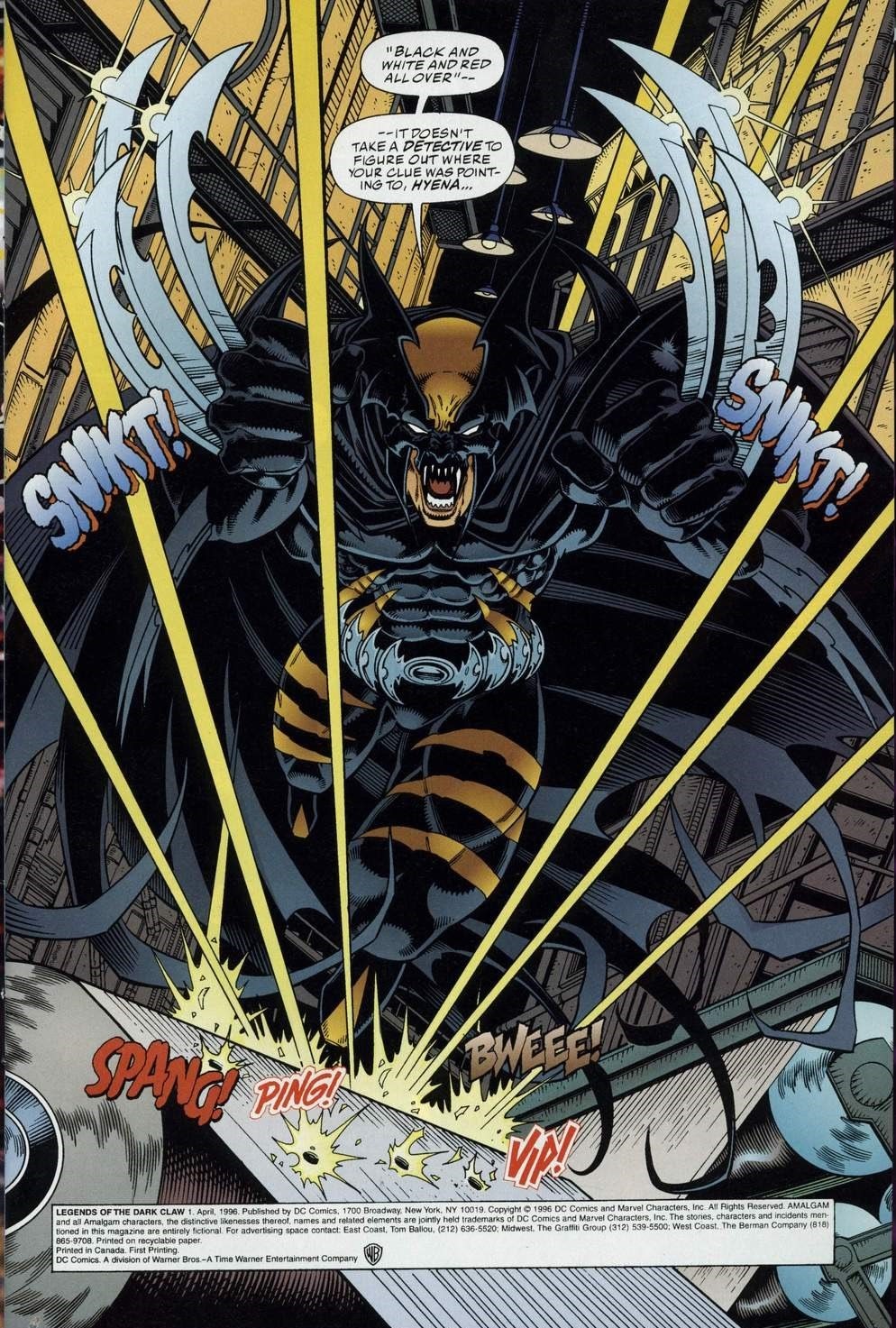
Some of these combinations are clever, Wolverine and Batman were two of the biggest money makers of the Big 2 at the time and Jubilee being mixed with Carrie makes so much sense because of the 80’s teenage girl aesthetic and the roles they play to their respective mentors. Ms. Marvel and Huntress on the other hand makes no real sense, but as with most things in this era, you are supposed to just roll with the punches and say “That’s radical dude!” The story itself is presented as part of a grander whole, even if the rest of it doesn’t actually exist. Exposition of Dark Claws backstory is handled about as naturally as possible though it’s a bit heavy-handed.
Is Legends of the Dark Claw really all it’s hyped up to be? Not really. It’s serviceable, and my younger self thought it was cool looking and was disappointed to find out there wasn’t more. I’ll give it that. What makes it really interesting to me is the footprint it left on the comic industry, and how so many different aspects of said industry led to this one comic being made. But I didn’t know that then, so I’ll let my younger self explain it best: “It’s fun, I like it.”
Brandon Daniels – Superman: Last Son Of Krypton
My gateway to comics was as unorthodox as it was ideal. As a little kid, I had no context for comics besides the cartoon adaptations that graced my TV. When I learned heroes like Spider-Man had adventures that pre-dated the ones I watched, I scavenged to learn more. I read countless wiki pages chronicling superheroes and villains – diving headfirst into a sea of stories. Eventually, my mom got me a collectors’ edition of the original Spider-Man comics by Stan Lee and Steve Ditko. I loved that graphic novel but never read any deeper. And after some reflection and growth, I became disillusioned with the potential of comics. They felt hokey. After all, I had read the 1960s Spider-Man comics; surely the medium had nowhere to go after that, right?
Years passed before I seriously picked up another comic, and funny enough, the moment occurred on a day designed by the industry to market to people like me – Free Comic Book Day (FCBD). I loved superheroes, knew of comics and was flabbergasted they were giving books away for free. Comics still felt old hat to me, but I’d be darned if I didn’t give them one more shot on the industry’s dime.
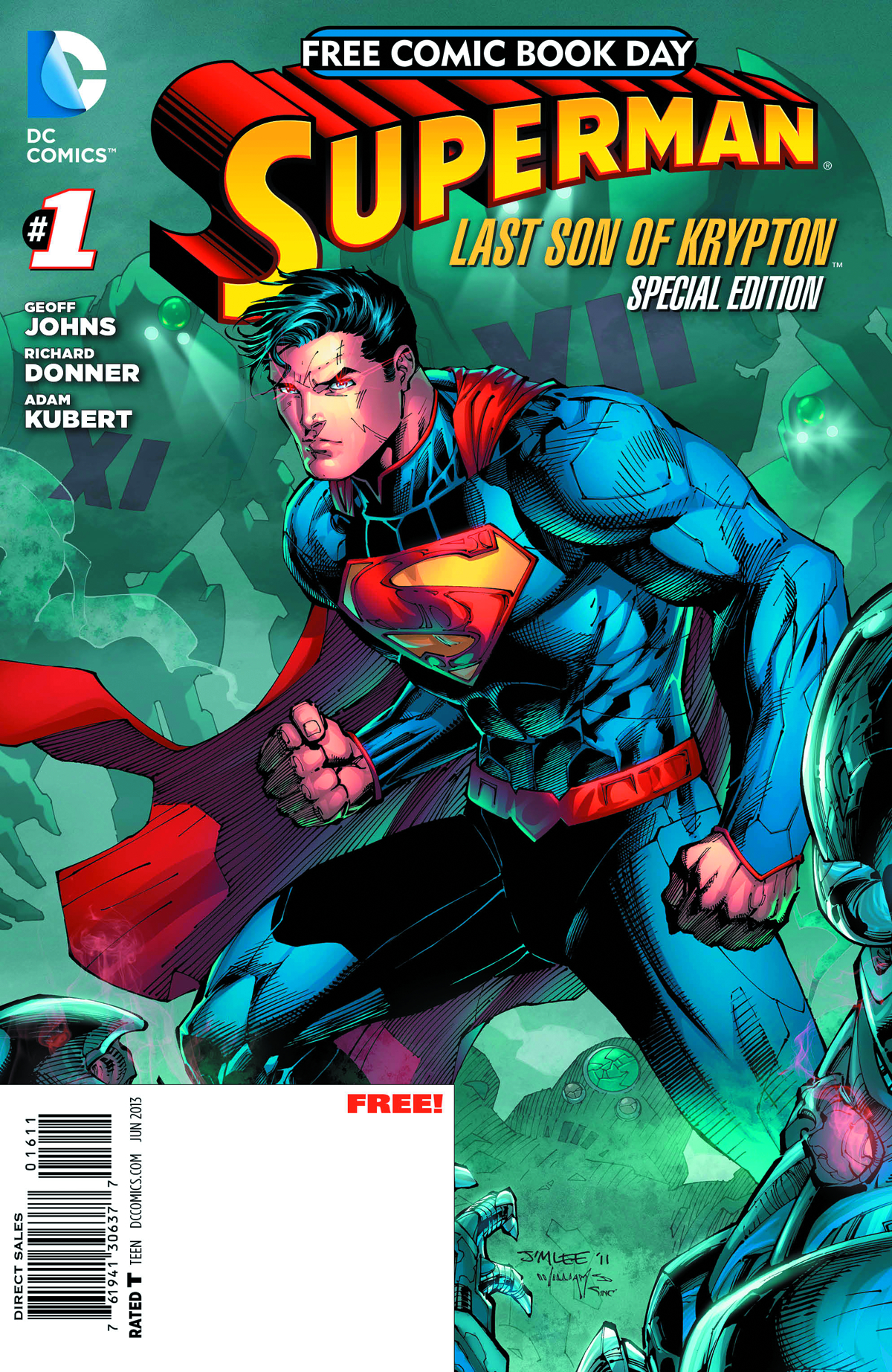
I went to my local comic store, picked up Superman: Last Son of Krypton #1, and had my ill-informed opinion wrecked by stunning storytelling. Crazy what 50+ years of progress can do for a medium. I was hard-pressed to find the next issue since the cover of the FCBD edition of Superman: Last Son of Krypton didn’t match the story, but I was so holistically engrossed, that I started delving into other comics as I hunted for that masterpiece.
Superman: Last Son of Krypton by Geoff Johns, Richard Donner, and Adam Kubert isn’t the greatest story of all time, but it’s the greatest comic to me. Where Lee and Ditko’s Spider-man explored heroics through the lens of a nebbish teenager, John’s Superman analyzed deeper themes of humanity, family, and sacrifice through the eyes of a good man. The stories of Superman have always had something to say about fatherhood, but this comic took that subject to the next level and pushed things farther than I thought comics were allowed to go. We even see echoes of this graphic novel in the recent Superman comics by Peter J. Tomasi and Patrick Gleason.
So, I’m glad I wasn’t the only one affected by the book. There are countless doors to the comic fandom – cartoons, back issues, and marketing-designed days. I’m glad it’s built like that. It affords for there to be an avenue for anyone interested in great stories told with sequential art. And more specifically, it allowed for a naïve superhero fan to get a second chance at discovering a world of incredible tales.
Ang Cruz – Paper Girls
The creativity that goes into creating a universe for suburban science fiction stories is one of the things that makes this specific genre unique. There’s something particularly interesting about the idea of a small town, maybe even one similar to where we live, hiding some sort of malicious, evil energy right under our noses. Paper Girls, a comic series written by Brian K. Vaughan and illustrated by Cliff Chiang, takes this concept and runs with it, leaving readers with a comic that is one of a kind.

Paper Girls tells the story of a group of newspaper delivery girls: Erin, Mac, KJ, and Tiffany. Set the day after Halloween in the late 1980s, the story takes a dark turn when the crew is attacked by a group of teenage boys who lead them to a construction house that also holds a secret time machine. From this point on, the girls find themselves in the middle of a battle that pushes the limits of time.
The plot of Paper Girls is extraordinary as it plays with the concept of time travel. Every twist and turn the girls encounter leaves you in a state of shock, eager to read the next issue. But alongside its unique plot, it’s also very human. The girls are in the middle of a time war, but they still deal with issues that are very relatable – such as breaking cycles, repression, and anxiety.
For example, Mac’s arc with her sexuality is one of the most nuanced portrayals of being young, queer, and scared. When we first got to know her, Mac’s homophobia is blatant. However, we gradually see her grow as she comes to terms with her identity and her feelings for her friend KJ. Lastly, with a lot of suburban science fiction being predominantly male-led, it’s refreshing to have a coming-of-age story with a strong and diverse group of female leads who are also not one-dimensional. Paper Girls is the kind of representation I would’ve loved to have when I was younger, but I’m thankful to know it exists now.
Any Recommendations?
We all enter the world of comics through different avenues and even after entering the world of comics, we explore different writers, genres, and artists. While exploring this world, let’s share our findings! Join TDF’s National Comic Book Day 2020 celebration by sharing your first comic book or the comic that got you into comics! Sharing a comic book you love is a a great way to spread positivity and a wonderful chance to reminisce on the story and art you love.
